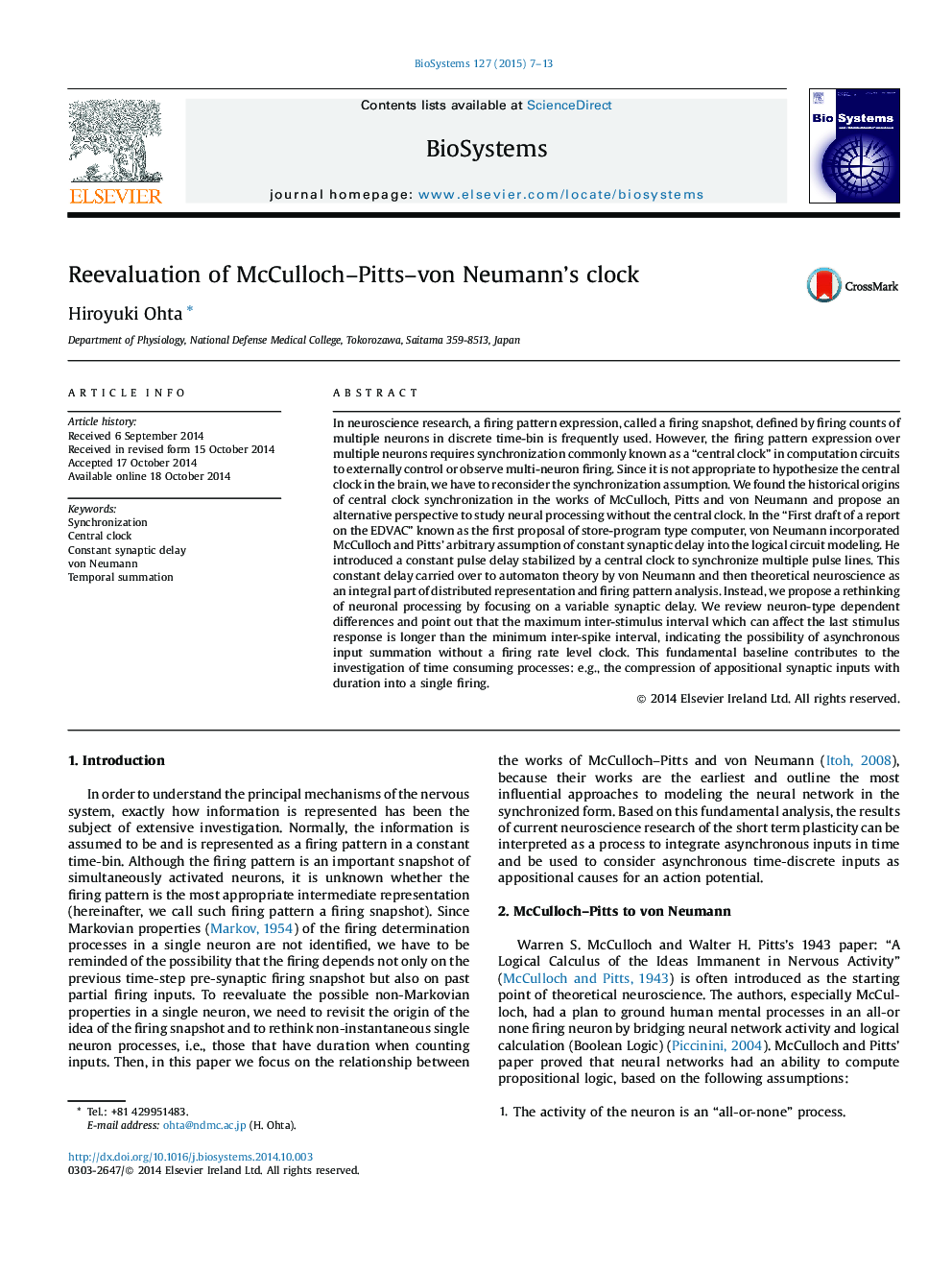| Article ID | Journal | Published Year | Pages | File Type |
|---|---|---|---|---|
| 2075905 | Biosystems | 2015 | 7 Pages |
In neuroscience research, a firing pattern expression, called a firing snapshot, defined by firing counts of multiple neurons in discrete time-bin is frequently used. However, the firing pattern expression over multiple neurons requires synchronization commonly known as a “central clock” in computation circuits to externally control or observe multi-neuron firing. Since it is not appropriate to hypothesize the central clock in the brain, we have to reconsider the synchronization assumption. We found the historical origins of central clock synchronization in the works of McCulloch, Pitts and von Neumann and propose an alternative perspective to study neural processing without the central clock. In the “First draft of a report on the EDVAC” known as the first proposal of store-program type computer, von Neumann incorporated McCulloch and Pitts’ arbitrary assumption of constant synaptic delay into the logical circuit modeling. He introduced a constant pulse delay stabilized by a central clock to synchronize multiple pulse lines. This constant delay carried over to automaton theory by von Neumann and then theoretical neuroscience as an integral part of distributed representation and firing pattern analysis. Instead, we propose a rethinking of neuronal processing by focusing on a variable synaptic delay. We review neuron-type dependent differences and point out that the maximum inter-stimulus interval which can affect the last stimulus response is longer than the minimum inter-spike interval, indicating the possibility of asynchronous input summation without a firing rate level clock. This fundamental baseline contributes to the investigation of time consuming processes: e.g., the compression of appositional synaptic inputs with duration into a single firing.
